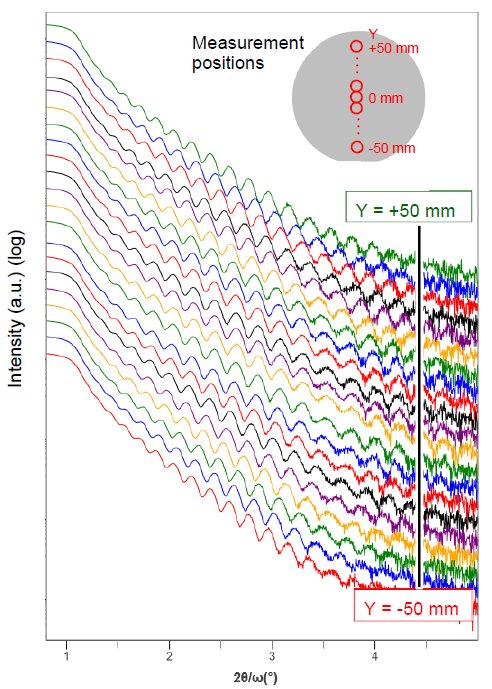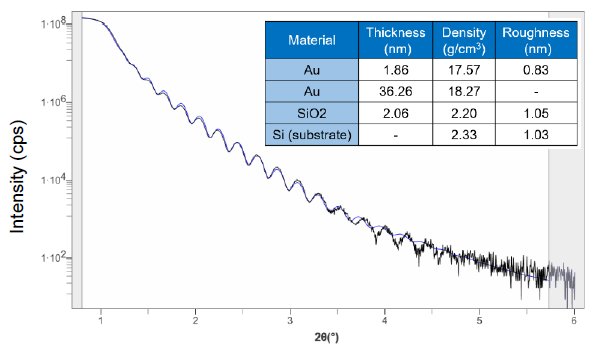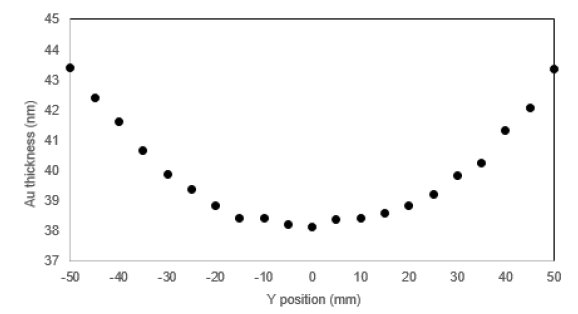Evaluation of Uniformity of Thin Film Thickness by X-ray Reflectivity Mapping
Introduction
The characteristics of various devices composed of nanometer-scale thin films is affected by film structure parameters such as film thickness and density. X-ray reflectivity (XRR) is a method for analyzing film thickness, density and surface or interface roughness of single- or multi-layer thin films nondestructively. It can be applied to not only crystalline materials but also to amorphous substances and materials opaque under visible light.
Measurements and results
XRR was employed to analyze the thickness of an Au thin film (target thickness = 50 nm) on a 4 inch Si substrate. Measurement was performed at 5 mm intervals in the Y direction to evaluate the unevenness of the thickness.
Figure 1 shows the overlay of observed XRR profiles. A thicker film thickness gives a smaller oscillation period of the fringes in an XRR profile. Figure 1 indicates that the Au film thickness is not uniform and is larger near the edge of the measurement area. Figures 2 and 3 show the result of XRR analysis by profile fitting at Y = 0 mm and the Au film thickness at each measurement position, respectively. The film thickness was uniform at 38.5 nm in the region Y = ±15 mm from the center of the sample, and gradually increased outside of the region, reaching 43.5 nm at the edge of the measurement area.

Figure 1: XRR profiles

Figure 2: The result of XRR analysis by profile fitting (Y = 0 mm)
 Figure 3: Analysis value of film thickness at each measurement position
Figure 3: Analysis value of film thickness at each measurement position

Contact Us
Whether you're interested in getting a quote, want a demo, need technical support, or simply have a question, we're here to help.
